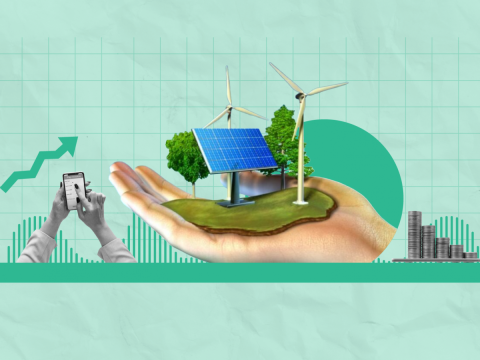Introduction
In investing, the worst risks are often the ones hiding in plain sight.
Today, legacy energy infrastructure — still labeled “safe” by many — is quietly becoming one of the riskiest bets on the market. Declining demand, regulatory crackdowns, and rising operational costs are eroding asset values faster than many realize. At the same time, renewable assets are emerging as the true drivers of growth, stability, and long-term capital protection.
Table of Contents
In this blog, we’ll explore why renewable energy asset value is becoming the new gold standard for smart portfolios and how clinging to outdated assets could sabotage your future returns.
Why Renewable Energy Asset Value Should Drive Your Investment Strategy
In 2024, global investment in clean energy crossed $2 trillion — more than twice the money flowing into fossil fuels (IEA). This accomplishment represents much more than environmental progress, as it functions as an important market indicator. Investors choose to shift their capital from legacy infrastructure because the fundamental market conditions have transformed. Renewable energy assets are increasing in value at the same time that the fossil fuel systems face rising costs combined with increased risk. But before diving into how renewables are reshaping portfolios, it’s crucial to understand the hidden risks tied to legacy energy assets.
Key Risks of Holding on to Legacy Energy Assets
- Stranded Asset Risk: Coal plants, oil pipelines, gas facilities, and others risk becoming stranded as the global race to reach the net-zero target ramps up. Carbon Tracker claims that over $1 trillion of fossil fuel infrastructure may get stranded, losing value long before the end of their expected lifespans.
- Legal and Regulatory Pressure: Corporate actors involved in high emissions and environmental degradation are facing a surge in litigations, fines, and compliance cost disbursements.
- Capital Access Constraints: Global economic powerhouses such as BlackRock, HSBC, and Allianz are tightening their purse strings on carbon-heavy investments. That’s a vital obstacle in the path of emerging economies. The International Energy Agency (IEA) says that investments in clean energy across the globe are now twice those in fossil fuels. This shows the massive shift in capital that is up for grabs now.
- Higher Insurance and Operating Costs: Insurance premiums and maintenance costs are on the rise for these assets due to tighter regulation and increasing corporate environmental requirements. These extra costs can reduce the overall profitability of fossil fuel investments over time.
Benefits of Renewable Energy Assets
After understanding the risks associated with traditional energy assets, it’s important to look at how renewable energy investments can offer a competitive edge.
- Stable and Predictable Returns: With increasing demand for clean energy and supportive policies, renewable energy projects often offer stable cash flows over long periods, providing predictable returns.
- More Reliable Technology Performance: The modern evolution of renewable technologies has become more advanced. According to BloombergNEF, the capacity factor of new U.S. wind projects increased to 41% in 2023 from 31% a decade ago because wind farms achieved greater efficiency, which lessens revenue uncertainty for investors.
- Protection from Fossil Fuel Price Shocks: The price volatility of oil and gas does not affect renewable assets. During global crises, renewable assets produce stable cash flows, which function as risk management tools in portfolios.
- Positive ESG Impact and Reputation Boost: The selection of renewable energy sources by investors and companies helps build better ESG performance ratings, which delivers greater market appeal to investors and capital market participants. Multiple studies demonstrate that strong ESG performance leads to improved financial results.
How to Future-Proof Your Portfolio
Recognizing the advantages of renewables is the first step — but how do you actually build a resilient energy investment strategy? The answer lies in taking proactive steps now to reduce exposure to stranded assets and strengthen your position in a decarbonizing world. Here’s how you can start building a portfolio designed to thrive in the energy transition.
1. Conduct a Carbon Exposure Audit
You should begin by calculating the percentage of existing assets that contain high-carbon elements. Assess and quantify the financial risks stemming from regulatory pressure and insurance costs that impact asset devaluation. This evaluation sets the baseline for sound decision-making.
2. Diversify into renewable energy
After that, investors should slowly redirect their capital into renewable energy developments such as wind farms, solar power, and battery systems, which present both sustainable growth opportunities and enduring security.
3. Adopt ESG Guidelines
Create investment guidelines based on environmental, social, and governance (ESG) standards to follow upcoming market-driven demand for sustainability practices.
4. Capitalize on government incentives
Companies should utilize available government incentives, including tax breaks, along with grants and subsidies to make their clean energy transition more efficient financially.
5. Leverage Green Bonds and Impact Investing
Make use of green bonds along with impact-driven financial products that support environmentally conscious projects while generating economic returns.
6. Track the Energy Transition
You should keep tabs on the energy transition by monitoring both business developments and policy changes alongside technological breakthroughs that will direct your investment choices.
Conclusion: Invest in What the Future Demands
A decade ago, sticking with legacy energy was framed as stability. Today, it’s something else — stagnation.
Across boardrooms and capital tables, the same realization is spreading — portfolios built for yesterday’s economy are losing relevance in today’s market. Renewable energy asset value is rising because the world’s economy, policies, and capital flows are aligning around it.
CFOs and asset managers who adapt quickly will protect their capital, open new revenue channels, and lead their industries. Those who hesitate will spend the next decade explaining why their portfolios lost ground and why competitors pulled ahead.
So what are you prioritizing: the comfort of legacy energy infrastructure or long-term resilience?
Drop your perspective in the comments.






